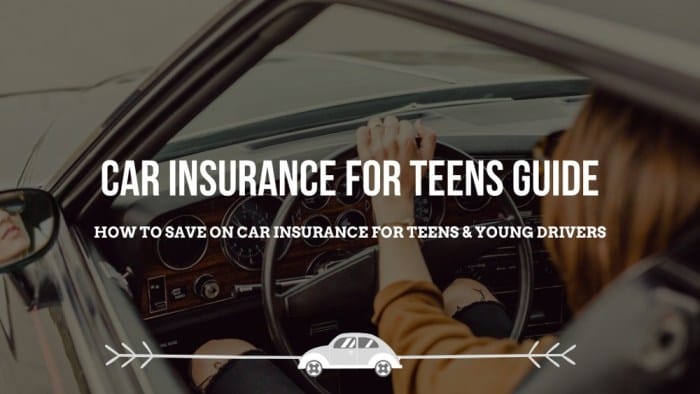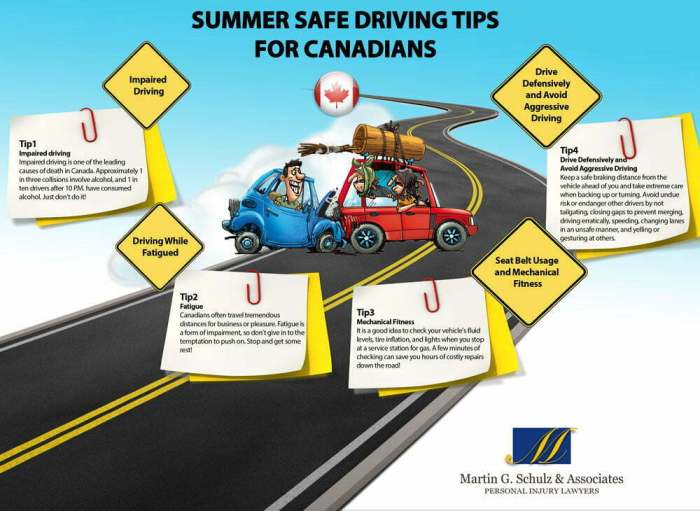In the realm of teenage car insurance, navigating the complexities of premiums and coverage can be a daunting task. As a parent, ensuring your teen’s safety on the road while minimizing insurance costs is paramount. This comprehensive guide delves into proven strategies to help you save money on teenage car insurance, empowering you to make informed decisions and secure affordable coverage.
From exploring cost-saving strategies and defensive driving courses to understanding usage-based insurance programs and multi-policy discounts, this guide equips you with the knowledge to navigate the insurance landscape effectively. Discover the impact of vehicle selection, parent-teen agreements, and telematics devices on insurance rates.
Learn about student discounts, payment options, and the significance of claim history and credit score in determining premiums. With this arsenal of information, you can confidently navigate the teenage car insurance maze and secure the best coverage at a price that won’t break the bank.
Cost-Saving Strategies

Teenage drivers face higher car insurance premiums due to their lack of experience and increased risk of accidents. However, there are several effective strategies to reduce these costs and make car insurance more affordable for teenage drivers and their families.
One approach is to take advantage of discounts and incentives offered by insurance companies that encourage safe driving habits. These may include discounts for maintaining a good grade point average, completing a driver’s education course, or installing telematics devices that monitor driving behavior.
Comparing Quotes
It is also essential to shop around and compare quotes from multiple insurance providers to find the best rates. This can be done online or through an insurance agent. When comparing quotes, it is important to consider not only the premium amount but also the coverage limits and deductibles.
A higher deductible can often result in a lower premium, but it is important to choose a deductible that you can afford to pay in the event of an accident.
Defensive Driving Courses
Enrolling teenage drivers in defensive driving courses offers significant benefits, including enhanced driving skills, improved risk assessment, and reduced accident rates. Studies conducted by the National Highway Traffic Safety Administration (NHTSA) reveal that young drivers who complete defensive driving courses are less likely to be involved in accidents, resulting in lower insurance premiums for both drivers and their families.
Online vs. In-Person Courses
Defensive driving courses come in two primary formats: online and in-person. Online courses provide the convenience of learning at one’s own pace and schedule, while in-person courses offer the advantage of hands-on instruction and real-time feedback from experienced instructors. The choice between these formats depends on the individual’s learning style and preferences.
Vehicle Selection

Choosing the right vehicle can significantly impact teenage car insurance rates. Certain makes, models, and features are associated with lower insurance premiums, while others may lead to higher costs.
Generally, vehicles with a history of safety, reliability, and affordability are preferred by insurance companies. These include sedans, minivans, and certain SUVs. Sports cars, high-performance vehicles, and luxury cars typically have higher insurance rates due to their perceived higher risk of accidents and theft.
Vehicle Make and Model
- Compact and Mid-Sized Sedans: Vehicles like Honda Civic, Toyota Corolla, and Hyundai Elantra often have lower insurance rates due to their affordability, reliability, and safety features.
- SUVs: Some SUVs, such as the Honda CR-V, Toyota RAV4, and Subaru Forester, are known for their safety and reliability, making them attractive options for teenage drivers.
- Minivans: Minivans like the Honda Odyssey, Toyota Sienna, and Kia Sedona are often associated with lower insurance rates due to their practicality and safety features.
Safety Features
- Airbags: Vehicles with multiple airbags, including side and curtain airbags, can reduce insurance premiums.
- Anti-Lock Brakes (ABS): ABS helps prevent wheels from locking during braking, reducing the risk of accidents and lowering insurance costs.
- Electronic Stability Control (ESC): ESC helps drivers maintain control of their vehicles during turns and slippery conditions, reducing the likelihood of accidents.
Anti-Theft Devices
- Immobilizers: Immobilizers prevent unauthorized engine starts, reducing the risk of theft and potentially lowering insurance premiums.
- Security Systems: Vehicles with factory-installed security systems, including alarms and motion sensors, can deter theft and lower insurance costs.
Usage-Based Insurance Programs

Usage-based insurance (UBI) programs offer teenage drivers the opportunity to save money on their car insurance premiums by monitoring their driving habits and rewarding them for safe driving.
UBI programs typically use a device installed in the vehicle to track factors such as mileage, speed, braking, and acceleration. The data collected is then used to calculate the driver’s premium, with safer drivers paying lower rates.
Benefits of UBI Programs for Teenage Drivers
- Lower Premiums: UBI programs can help teenage drivers save money on their car insurance premiums by rewarding them for safe driving.
- Encourages Safe Driving: By tracking driving habits, UBI programs encourage teenage drivers to drive more safely, which can lead to fewer accidents and safer roads.
- Personalized Rates: UBI programs provide personalized rates based on individual driving habits, which can be fairer than traditional insurance plans that charge all teenage drivers the same high rate.
Examples of UBI Programs
- Progressive Snapshot: Progressive Snapshot is a popular UBI program that uses a small device plugged into the vehicle’s OBD-II port to track driving habits. Drivers can earn discounts of up to 30% on their premiums based on their driving score.
- Allstate Drivewise: Allstate Drivewise is another UBI program that uses a mobile app to track driving habits. Drivers can earn discounts of up to 25% on their premiums based on their driving score.
- State Farm Drive Safe & Save: State Farm Drive Safe & Save is a UBI program that uses a mobile app or plug-in device to track driving habits. Drivers can earn discounts of up to 30% on their premiums based on their driving score.
Tips for Maximizing Savings Through UBI Programs
- Maintain Good Driving Habits: The key to maximizing savings through UBI programs is to maintain good driving habits. This means obeying speed limits, avoiding hard braking and acceleration, and driving defensively.
- Limit Mileage: If your UBI program tracks mileage, try to limit your driving to essential trips. The less you drive, the lower your premium will be.
- Choose a UBI Program That Fits Your Needs: Not all UBI programs are created equal. Choose a program that offers the features and discounts that are most important to you.
Parent-Teen Agreements
Establishing clear expectations and responsibilities regarding car usage and insurance is crucial for parents and teens. A well-defined parent-teen agreement can help prevent misunderstandings, promote responsible driving habits, and ensure that both parties are aware of their roles and obligations.
A parent-teen agreement should address various aspects of car ownership and insurance, including:
Usage Restrictions
- Define the specific purposes for which the teen is allowed to use the car.
- Set curfew hours and limit driving during high-risk times, such as late at night.
- Prohibit the teen from driving under the influence of drugs or alcohol.
Insurance Responsibilities
- Specify who is responsible for paying the insurance premiums.
- Discuss the consequences of failing to maintain insurance coverage.
- Explain the importance of reporting any accidents or violations to the insurance company.
Vehicle Maintenance
- Artikel the teen’s responsibilities for maintaining the car, such as regular oil changes and tire rotations.
- Set expectations for keeping the car clean and in good condition.
- Encourage the teen to report any mechanical issues promptly.
Consequences
- Define the consequences for violating the terms of the agreement, such as grounding, loss of driving privileges, or increased insurance premiums.
- Make sure the consequences are clear, fair, and consistently enforced.
To ensure the effectiveness of the parent-teen agreement, both parties should actively participate in its creation and review it regularly. Open communication and mutual understanding are essential for fostering a positive and responsible relationship between parents and teens.
Telematics Devices
Telematics devices offer an innovative solution for monitoring teenage driving behavior, potentially leading to lower insurance costs. These devices collect and transmit data on driving habits, such as speed, acceleration, braking, and location, to insurance companies.
Telematics devices come in various forms, including smartphone apps, plug-in devices, and in-vehicle systems. They utilize GPS tracking to monitor location, speed monitoring to detect speeding incidents, and crash detection to alert emergency services in case of an accident.
Case Studies
- A study by the National Highway Traffic Safety Administration (NHTSA) found that telematics devices reduced the number of accidents among teenage drivers by 20%.
- A study by the Insurance Institute for Highway Safety (IIHS) found that telematics devices led to a 15% decrease in insurance premiums for teenage drivers.
Multi-Policy Discounts

Bundling car insurance with other insurance policies, like homeowners or renters insurance, can bring substantial savings. Many insurance companies offer multi-policy discounts, rewarding customers for consolidating their insurance needs under one roof.
Benefits of Multi-Policy Discounts
- Convenience: Managing multiple policies with a single insurer simplifies insurance management and streamlines the claims process.
- Cost Savings: Combining policies often attracts discounts, reducing the overall insurance premium. The exact discount varies by company and policy combination.
- Streamlined Communication: Dealing with a single insurer for multiple policies improves communication and ensures a consistent experience.
Examples of Multi-Policy Discounts
- State Farm: Offers a multi-policy discount of up to 25% when combining auto and home insurance policies.
- Geico: Provides a multi-policy discount of up to 15% for combining auto and renters insurance policies.
- Progressive: Offers a multi-policy discount of up to 10% when bundling auto insurance with homeowners or renters insurance policies.
Negotiating Multi-Policy Discounts
- Compare Quotes: Obtain quotes from multiple insurers to compare multi-policy discount rates. Consider factors like coverage levels and deductibles to ensure a fair comparison.
- Ask for Discounts: Inquire about multi-policy discounts when speaking with insurance agents. Politely negotiate for the best possible rate.
- Consider Bundling Additional Policies: Explore the option of bundling additional policies, such as life insurance or umbrella insurance, to potentially increase the discount.
Student Discounts

Teenage drivers can often secure substantial discounts on their car insurance premiums by maintaining good grades and participating in extracurricular activities. These discounts recognize the responsibility and commitment of students who excel academically and engage in productive activities outside of the classroom.
To qualify for student discounts, teenage drivers typically need to meet certain eligibility requirements, such as maintaining a minimum GPA or participating in a certain number of extracurricular activities. The specific requirements vary depending on the insurance company and the type of discount being offered.
Insurance Companies Offering Student Discounts
- Geico: Offers a 15% discount to students who maintain a GPA of 3.0 or higher.
- Progressive: Provides a 5% discount to students who maintain a GPA of 3.0 or higher and an additional 5% discount for participating in extracurricular activities.
- Allstate: Offers a 10% discount to students who maintain a GPA of 3.5 or higher and an additional 5% discount for participating in extracurricular activities.
To apply for a student discount, teenage drivers typically need to provide proof of their grades or extracurricular activities. This can be done by submitting a transcript or a letter from the school or by providing documentation of participation in extracurricular activities.
Tips for Maximizing Student Discounts
- Maintain a High GPA: The higher the GPA, the greater the discount. Aim for a GPA of 3.5 or higher to maximize savings.
- Participate in Extracurricular Activities: Participating in extracurricular activities demonstrates responsibility and commitment. Choose activities that align with interests and passions.
- Ask About Multiple Discounts: Some insurance companies offer multiple discounts that can be combined, such as student discounts and good driver discounts. Inquire about available discounts to maximize savings.
Payment Options
When it comes to paying for teenage car insurance, there are several payment options available, each with its own advantages and disadvantages. Understanding these options and choosing the one that best suits your needs can help you manage your insurance costs effectively.
The most common payment options for car insurance include monthly, quarterly, and annual payments.
Monthly Payments
- Pros:
- Spreads the cost of insurance over a longer period, making it more manageable for tight budgets.
- Provides flexibility in adjusting the payment schedule if needed.
- Cons:
- Can result in higher overall costs due to additional interest charges.
- Requires consistent and timely payments to avoid late fees and coverage lapses.
Quarterly Payments
- Pros:
- Reduces the number of payments you need to make throughout the year.
- Can result in lower overall costs compared to monthly payments.
- Cons:
- Requires a larger upfront payment compared to monthly payments.
- Less flexibility in adjusting the payment schedule if needed.
Annual Payments
- Pros:
- Offers the greatest potential for savings, as it typically results in lower overall costs.
- Eliminates the need for multiple payments throughout the year.
- Cons:
- Requires a large upfront payment, which may not be feasible for all drivers.
- Less flexibility in adjusting the payment schedule if needed.
Ultimately, the best payment option for teenage drivers depends on their financial situation and preferences. It’s important to consider the pros and cons of each option, as well as any additional fees or charges that may apply, before making a decision.
Tips for Setting Up Automatic Payments
- Set up automatic payments:
- To avoid late fees and ensure continuous coverage, consider setting up automatic payments from your bank account.
- Choose the right date:
- Select a payment date that aligns with your income schedule to ensure you have sufficient funds available.
- Monitor your payments:
- Keep track of your payments and ensure they are being processed correctly and on time.
Claim History and Credit Score
A teenager’s claim history and credit score significantly impact their car insurance rates. Insurance companies assess the risk associated with insuring a teenage driver based on their driving record and credit history. A clean driving record and a good credit score can lead to lower insurance premiums, while a history of accidents or traffic violations and a poor credit score can result in higher premiums.
Impact of Claim History on Insurance Rates
A teenager’s claim history is a crucial factor in determining their car insurance rates. Insurance companies view drivers with a history of accidents or traffic violations as higher risk and charge them higher premiums. Each claim filed increases the likelihood of future claims, leading to higher insurance costs.
Example: A teenager with a clean driving record may pay an annual premium of $1,500, while a teenager with a history of accidents or traffic violations may pay $2,500 or more.
Impact of Credit Score on Insurance Rates
A teenager’s credit score also plays a role in determining their car insurance rates. Insurance companies use credit scores to assess an individual’s financial responsibility and stability. A good credit score indicates a history of paying bills on time and managing debt responsibly, which insurance companies view favorably.
Example: A teenager with a good credit score may receive a discount on their car insurance premium, while a teenager with a poor credit score may pay a higher premium.
Tips for Improving Credit Score and Maintaining a Clean Driving Record
- Pay bills on time: Consistently paying bills on time is one of the most important factors in improving a credit score.
- Keep credit utilization low: Avoid using too much of your available credit. Aim to keep your credit utilization below 30%.
- Reduce debt: Pay down debt as soon as possible, especially high-interest debt.
- Avoid opening too many new credit accounts in a short period: Opening multiple credit accounts in a short time can negatively impact your credit score.
- Drive safely and obey traffic laws: Avoid traffic violations and accidents to maintain a clean driving record.
- Complete a defensive driving course: Taking a defensive driving course can help improve your driving skills and may lead to a discount on your car insurance premium.
Closure

Equipping yourself with the knowledge and strategies Artikeld in this guide, you can embark on a journey towards substantial savings on teenage car insurance. By implementing these tips and fostering responsible driving habits in your teen, you can create a safer driving environment while enjoying peace of mind knowing that your teen is adequately protected on the road.
Remember, the key to saving money on teenage car insurance lies in proactive planning, informed decision-making, and a commitment to safety. Embrace these strategies and watch your insurance costs dwindle while your teen’s driving skills and confidence soar.
Frequently Asked Questions
Q: What are some effective ways to reduce car insurance premiums for teenage drivers?
A: Consider enrolling your teen in defensive driving courses, selecting a vehicle with lower insurance rates, and exploring usage-based insurance programs.
Q: How can parent-teen agreements contribute to lower insurance costs?
A: Establishing clear expectations, rules, and consequences regarding car usage and insurance responsibilities can promote responsible driving habits and potentially lead to lower premiums.
Q: What are the benefits of telematics devices in reducing insurance premiums?
A: Telematics devices monitor teenage driving behavior, providing valuable data to insurance companies. This data can be used to reward safe driving habits with lower premiums.
Q: How can student discounts help save money on teenage car insurance?
A: Many insurance companies offer discounts to teenage drivers who maintain good grades or participate in extracurricular activities. Maintaining a high GPA and participating in various activities can lead to significant savings.
Q: What impact does claim history and credit score have on teenage car insurance rates?
A: A clean driving record and a good credit score can positively influence teenage car insurance rates, resulting in lower premiums. Conversely, a history of accidents or a poor credit score can lead to higher premiums.



